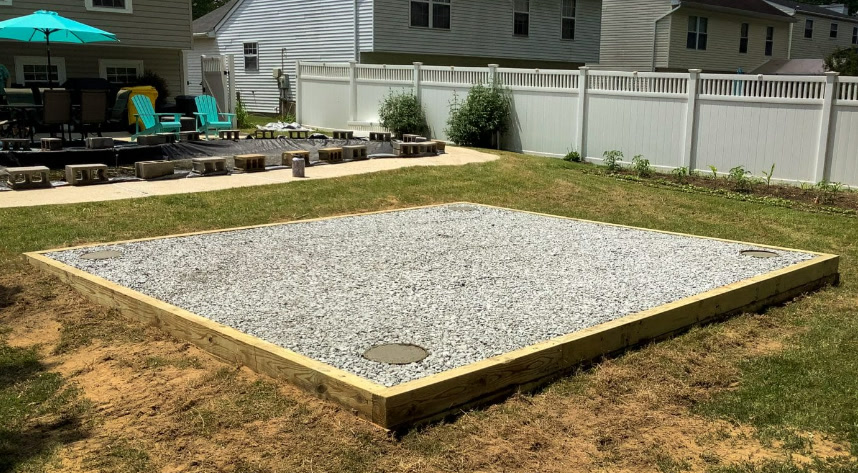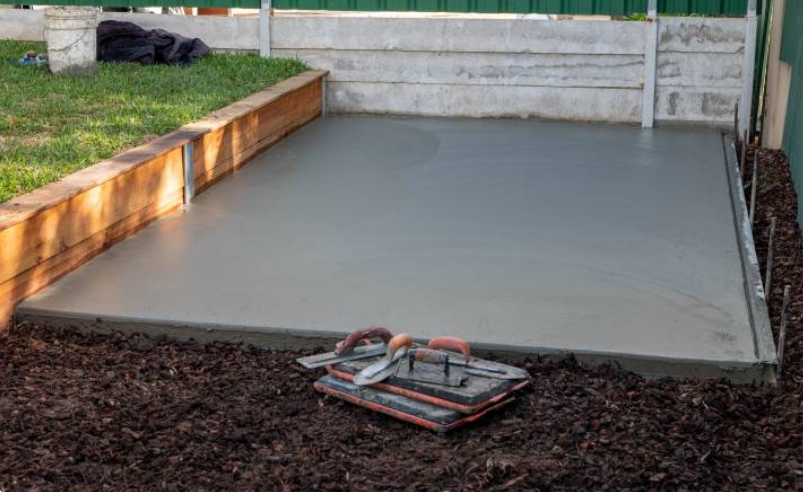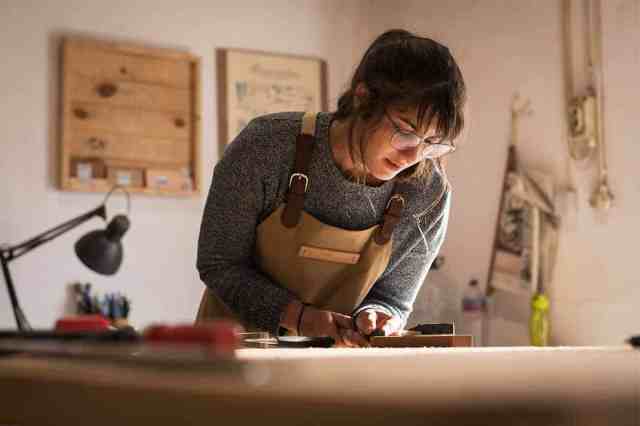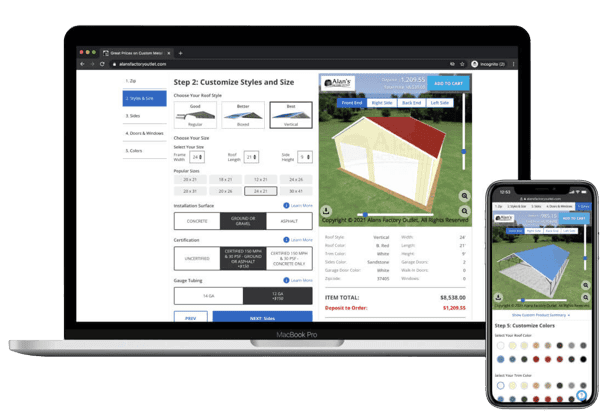Whether you’re looking for a place to organize your yard tools or a new space for your workshop, a shed can be just the solution. But what size would work best for you?
Choosing the right shed size can be a bit like choosing the right pair of shoes—you need the perfect fit. A shed that’s too small will leave you cramped and frustrated, while one that’s too big might be a waste of space and money.
Before you build or order a shed, it’s important to understand standard shed sizes and what you plan on using the space for. This guide walks you through everything you need to know about shed dimensions so you can find the one that’s right for you.
Standard Vs. Custom Shed Sizes
Let’s start with the basics. When you’re thinking about getting a shed, you’ve got two choices: standard or custom.
- Standard sheds are like your off-the-rack clothes—they come in set sizes and are more affordable.
- On the other hand, custom sheds are like getting a suit tailored—you get exactly what you want, but it will cost a bit more.
| Feature | Standard Sheds | Custom Sheds |
|---|---|---|
| Size | Pre-determined sizes | Tailored to your needs |
| Cost | More affordable | More expensive |
| Lead Time | Usually readily available | May require longer lead times |
| Flexibility | Limited | Highly flexible |
Since custom sheds can come in any size, we can’t list them all. So, we’ll focus on standard shed sizes.
Understanding Shed Size Categories

Roughly speaking, standard sheds come in three sizes:
- Small
- Medium
- Large
It’s generally accepted that anything below 120 square feet is small, and anything above 160 square feet is large. Below, we differentiate the standard size parameters and their storage capabilities.
Shed Size: Small
According to the 2023 National Gardening Survey, the average American spends $616 a year on lawn and gardening activities. A small shed can come in handy if you’re looking for a place to store those supplies or some extra storage space for yard work equipment.
While sheds are traditionally used to store tools, there’s a lot you can do with a shed 100 square feet or less. For example, you could use a small shed as a luxury playhouse or a firewood storage space.
Standard dimensions of small sheds include:
| Shed Dimensions | Height (Ft) | Floor Area (Sq Ft) |
|---|---|---|
| 8’ x 8’ | 8’ | 64 |
| 8’ x 10’ | 8’ | 80 |
| 8’ x 12’ | 7’ | 96 |
| 10’ x 10’ | 7’ | 100 |
Common Uses
- Garden tool storage
- Dog house
- Oil/fertilizer storage
- Art studio
- Firewood storage
Shed Size: Medium
Medium sheds are great for storing larger yard tools such as leaf blowers, snow blowers, and wheelbarrows. They can also double as a home office or a pool house.
With 100 to 150 square feet of room, medium sheds let you get creative with your building use.
Here are the dimensions and square footage of common medium-sized sheds:
| Shed Dimensions | Wall Height (Ft) | Floor Area (Sq Ft) |
|---|---|---|
| 8’ x 16’ | 8’ | 128 |
| 10’ x 12’ | 8’ | 120 |
| 10’ x 14’ | 8’ | 140 |
| 10’ x 15’ | 10’ | 150 |
| 12’ x 12’ | 12’ | 144 |
Common Uses
- Leaf blower storage
- Small home office spaces
- Motorcycle storage
- Furniture storage
- Woodworking shop
Shed Size: Large
Large sheds can store just about anything and have a wider variety of uses than the smaller sizes. They are a popular size because they can store bicycles, ATVs, and larger items. You can also use them as extra living or small business space.
Since a larger shed is also a bigger investment, make sure you research which materials to use before purchasing.
Standard large sheds are typically above 150 square feet and come in the following sizes:
| Shed Dimensions | Wall Height (Ft) | Floor Area (Sq Ft) |
|---|---|---|
| 10’ x 16’ | 10’ | 160 |
| 10’ x 20’ | 12’ | 200 |
| 12’ x 16’ | 12’ | 192 |
| 12’ x 20’ | 12’ | 240 |
| 12’ x 24’ | 12’ | 288 |
| 16’ x 20’ | 12’ | 320 |
Common Uses
- Extra living space
- Home gym
- ATV and water ski storage
- Tractor storage
- Small business space
The Most Popular Shed Sizes
Some shed sizes are more popular than others.
Here are the most popular shed sizes in the US:
| Shed Size | Shed Dimensions (Ft) |
|---|---|
| Small | 8’ x 12’ |
| Medium | 10’ x 12’ |
| Large | 12’ x 16’ (most popular) |
However, our customers prefer larger sheds, with 12’ x 20’, 18’ x 20’, and 20’ x 20’ being the top picks. Although we can trim a 12’ x 20’ to a 10’ x 20’ or smaller at no additional cost, we recommend sticking with the larger size. It offers ample space, whether you’re storing your lawn mower, setting up a workshop, or creating a quiet getaway in your backyard.
Most people find that when they start off with a smaller shed, they end up regretting it and eventually upgrade to a larger size anyway.
Popular Shed Dimensions By Use
Now, if you’re looking for a shed for a specific purpose, like a pool house or a workshop, certain sizes tend to work better than others.
| Use | Common Shed Sizes (Ft) |
|---|---|
| Pool House | 10×20, 12×16, 12×24 |
| Storage | 6×8, 8×8, 8×10, 8×10, 8×12, 10x108x10, 8×12, 10×10, 10×12, 10×14, 10×16, 12×20 |
| Tools Shed | 6×8, 8×8, 8×10 |
| Office Space | 8×12, 10×12, 10×20, 12×16 |
| Gardening & Greenhouse | 10×12, 10×16, 10×20, 12×16, 12×24, 12×28, 12×32 |
| Tiny Home | 10×12, 10×16, 12×16, 12×20 |
| Home Gym | 10×12, 12×12, 12×16, 12×20 |
| Bar | 6×8, 8×8, 8×10, 8×10, 8×12, 10×10 |
Choosing Your Shed Height
When deciding what size shed you need, don’t forget the height.
The height of the walls impacts what you can use the shed for. Smaller sheds have walls around 6 feet high, while larger ones can go up to 12 or 14 feet—allowing for significantly more vertical storage.
How to Choose the Right Shed Size

The right shed size is going to vary depending on your individual needs. Are you trying to use your shed to store basic power tools, or do you want a space for a luxury home gym? Some key factors to consider when choosing a shed size include:
Available Space
The first thing to consider is how much space you have in your yard.
You’ll need to measure your available space to determine the size of your shed and where to place it.
Think about where the door should be and whether you want it facing a specific direction. Also, consider whether you want a window and how much light that window will gather.
Purpose of Use
The reason you’re getting a shed plays a big role in figuring out the size you need.
- Are you an avid gardener looking for a place to store your gardening supplies?
- Do you want to build a backyard studio?
- Or, perhaps you need a guest house for your in-laws?
A smaller shed might do the trick if you just want to stash your lawn and gardening tools. But if you dream of a home gym or a place to run your small business, you’ll probably need to go bigger.
Storage Needs
If you need a shed for storage, the size will depend on the items you need to store. While power tools can easily fit in an 8’ x 10’ shed, if you’re planning to store ATVs or water skis, you’ll need a lot more space.
Budget
The larger the shed, the more it will cost. Prefab shed options range from $200 for smaller models to $5,000 for larger, higher-quality buildings.
Custom sheds cost $15–$200 per square foot. So, you could pay as little as $500 for a basic closet-sized shed or $15,000 for a larger custom shed with all the bells and whistles.
Remember that size isn’t the only factor that will impact your budget. The design and material will also affect the shed’s final cost.
Local Building Regulations
In some places, regulations require a permit to build buildings larger than a specific size.
While most areas allow 6’ x 8’ and 8’ x 10’ sheds without a permit, you can run into issues if you build anything above 120 square feet.
If you accidentally violate local building regulations, you could face a fine and possibly have your shed removed.
You can check the National Zoning Atlas if you’re not sure if you need a building permit for a shed in your area.
Shed Sizes and Foundations
Just like a house needs a good foundation, your shed needs a solid base, especially if you’re going with a larger size.
Does a shed need a foundation?
Smaller sheds under 8’ x 8’ usually don’t need a concrete foundation, but it’s still a good idea to have something solid underneath.

For bigger sheds, a foundation is a must.
You’ve got a few options when it comes to types of foundation, depending on the size of your shed:
- Small Sheds: Gravel pad, concrete blocks, or skids.
- Medium Sheds: Gravel pad or concrete slab.
- Large Sheds: Concrete slab (sometimes with footings).
Concrete Slab Foundations

If you’re going with a concrete slab, make sure it’s a bit bigger than the shed itself—about half a foot extra on each side.
Check out our concrete pad-size calculator to easily find out the size you need. You can then use our concrete slab calculator to estimate how much concrete to mix.
Do you need rebar for a 4-inch slab for a shed?
For most sheds, a 4-inch slab doesn’t need rebar. It adds strength, but it’s often unnecessary unless you’re putting something heavy in your shed or if your soil is unstable.
Beyond Size—Your Dream Shed Awaits!
Choosing the right shed can help revamp your outdoor space, organize your tools, and declutter your yard. Larger sheds can double as extra living spaces or a home gym.
Use our 3D metal building customizer to design and buy your metal shed or garage today.
FAQs
Got a few additional questions about shed sizes? We’ve got you covered!
What are standard shed sizes?
Standard shed sizes typically range from small sheds around 8’ x 8’ to larger ones around 12’ x 20’ or more.
How big is a 12’ x 16’ shed?
A 12’ x 16’ shed gives you 192 square feet of floor space—about the size of a small bedroom.
Do you need airflow under a shed?
Yes, good airflow under a shed is important to prevent moisture buildup and keep things dry.
How high should a shed be off the ground?
Ideally, you should raise your shed at least 6 inches off the ground to prevent water damage and allow air circulation.




